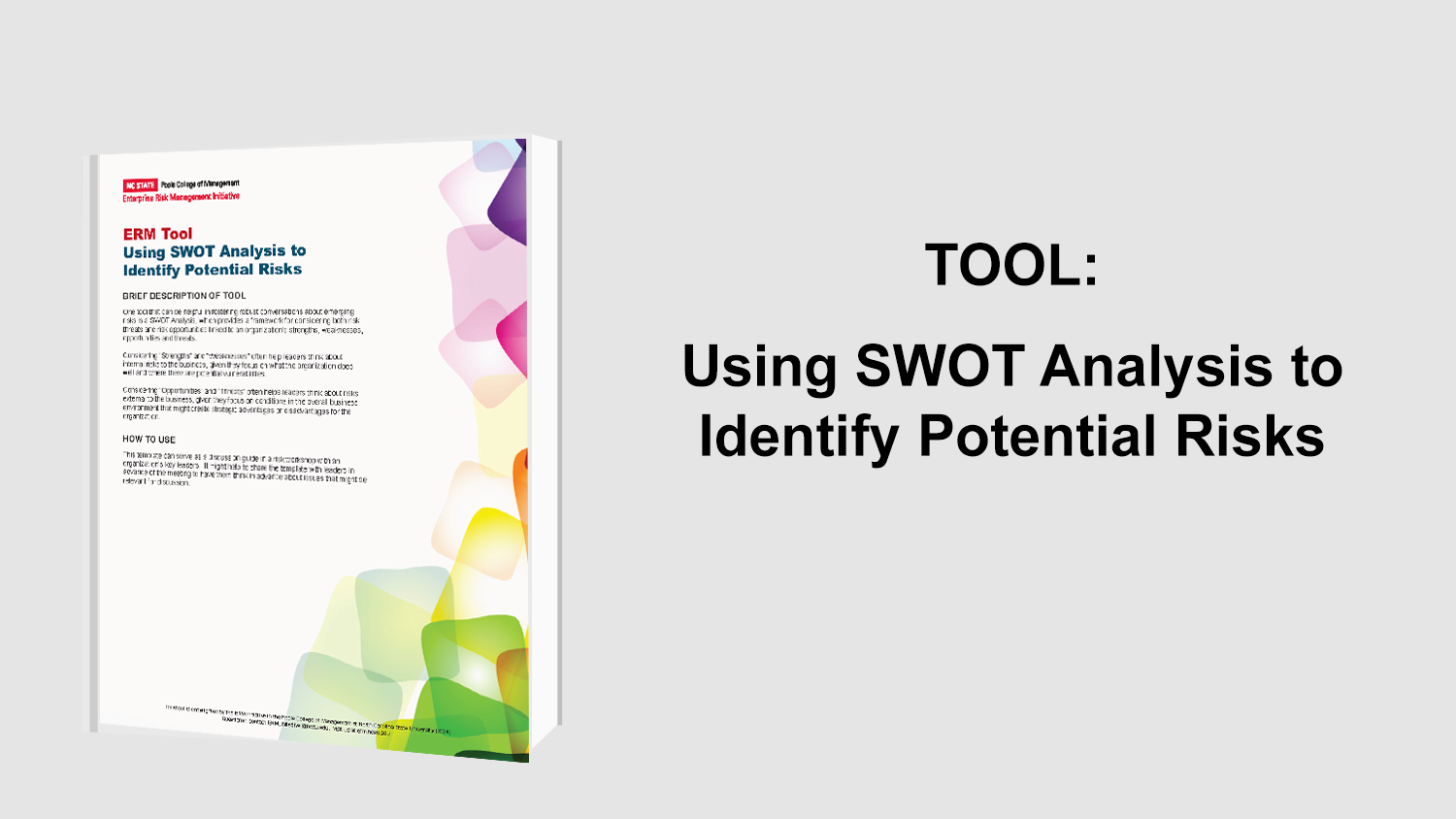Minimizing Risks through Creative Strategy Setting
Despite the widely embraced interconnectivity of “risk and return,” so often organizations ploy through a strategy planning activity with minimal explicit focus on the underlying risks to the strategy. Conventional thought dictates that risks will inevitably arise as a strategy is executed and those risks would be managed when faced. A recent Harvard Business Review article suggests that strategic planning embrace a scientific approach consisting of seven steps. These steps, briefly described below, considerably assist organizations in choosing the right strategy by engaging these leaders in addressing risks during the actual stage of choosing the right strategy rather than waiting to think about risks once the strategy is implemented. By doing so, organizations will be better positioned to understand the risks involved, thereby greatly increasing the likelihood of strategic success through enhanced risk oversight.
Seven Steps of the Scientific Approach to Strategy
1. Move from Issues to Choice – Rather than focus on issues that can potentially trap strategists into building one strategy, strategists must understand the need to develop options for strategy. The approach also known as the “possibilities-based approach” begins with the recognition that organizations must make a choice to start the strategy-making process. Those choices will have consequences or potential risks, which have to be assessed among various levels of the organization in determining the right strategy.
2. Generate Strategic Possibilities – Once they recognize that a choice needs to be made, strategists should focus on the range of possibilities of strategies to consider. The range is based on three criteria
a) Desired output – This would include the advantage of a particular strategy along with its scope and activities that would deliver the advantages sought.
b) The people – A diverse mix of individuals with different backgrounds and experiences that can generate a rich culmination of creative possibilities with sufficient details.
c) The rules – The focus of this step is to create possibilities, not criticize or undermine them.
- Specify the Conditions for Success – Once the possibilities have been created, they have to specify “what must be true” for each possibility to be the best choice. Often, the line between “what is true” and “what must be true” for each possibility gets blurred. Hence, it is important to keep this distinction in mind during this step. Doing so allows all conditions (potential risks) that have to be true for an attractive strategy to be identified.
- Identify the Barriers to Choice – The possible conditions identified are assessed by deciding the condition that is believed to be the least likely to hold true. This condition would probably be the biggest barrier (or risks) to choosing that possibility. Besides the condition, they must pay close attention to the person who is the most skeptical since that person will represent the greatest obstacle. The barriers should then be ranked for the next step.
- Design Tests for the Barrier Conditions – Here, the group must test each barrier condition to see if it holds true. One of the ways for testing is through surveys of 1000 customers or a single supplier. Also, it is recommended that the person who was most skeptical about a particular condition should lead the designing and testing of that condition. If that person is satisfied with the design, everyone else should be satisfied it because the skeptical person would employ high standards and thereby make the tests more effective.
- Conduct the Tests – To be cost-effective, the condition that the group feels is least likely to hold up is tested first. If the group is right, then the possibility associated with that condition can be eliminated. At this stage, the group can employ the expertise of outside consultants and experts. By this step, the group has identified the possibilities and associated conditions (risks), and is testing those conditions.
- Make the Choice – With careful consideration and exercising due diligence of the preceding six steps including the possibilities-based approach, the group makes the choice of the best possible strategy. This choice has been assessed, evaluated and tested to have the “fewest serious barriers.”
Risk Management through the Scientific Method
The authors that provided this scientific method of strategy planning understood that addressing potential risks should be embedded in the process of choosing the right strategy. The traditional approach entailed developing one strategy and executing that strategy. Attempts would be made to manage and mitigate several risks that arose later. That called for a change or modification of the strategy at a later date. This process is not efficient and exposes organizations to various risks that can be difficult to manage and can cause detrimental loss to the organization.
The possibilities-based approach provides organizations with steps to ensure that the process of finding the right strategy is coagulated by the process of identifying major risks associated with each possibility. Those major risks are tested and the strategy associated with the best conditions is the chosen strategy. Unlike the traditional method, this method makes the choice very simple. However, choosing the right strategy does not preclude it from all uncertainty. There will always be some levels of risks associated even with the best possible strategy. Hence, at this final stage, organizations should compare the risk of this strategy with the risk of the status quo (via the traditional method) and reach a decision.
Conclusion
Introducing a new method of strategy setting with an incorporation of risk assessment allows strategists to improve its organization’s likelihood of strategic success through enhanced proactive risk thinking. Through the seven steps, organizations can pinpoint risks that may emerge and threaten its strategies. The authors provide seven key steps that allow organizations to manage such risks and increase the organizations’ risk oversight capabilities to further minimize potential risks that are associated with strategy setting.
Original Article Source: “Bringing Science to the Art of Strategy,” Harvard Business Review, September 2012
- Categories:
- Types:


